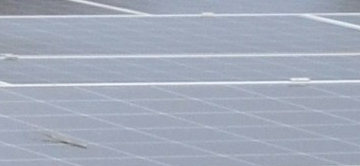It is difficult to find a facet of politics which does not relate, in some way, to energy issues. Conversely, most decisions relating to energy have a range of knock-on effects (many of them hard to predict and manage) on many aspects of social life. It is therefore understandable (without condoning such behaviour) that governments are reluctant to abandon control of this vital industry to regulators and competition authorities. It is also easy to understand the reticence of national governments to let Brussels build an Energy Union. Yet they would have much to gain from such an endeavour.
-
Remaining resilient and forward-looking
In a 2015 publication entitled "Energy Union Package", (with the more elegant sub-header "A Framework Strategy for a Resilient Energy Union with a Forward-Looking Climate Change Policy" [1]), the European Commission explained why the future of the EU must involve greater physical and organizational integration of national energy markets. Over the course of twenty-five pages and fifteen action points, the Commission summed up its strategy, including a precise roadmap up to 2020.
In the section dealing with safeguarding gas and petrol supplies, the Commission touches on foreign policy and trade policy. The need for energy efficiency forces it to address housing and transport policies. With the push for renewables, innovation and employment are under the spotlight. Projects of Common Interest fall under industrial policy, and land-use planning. Speaking about demand playing a part in re-balancing the electricity dispatch means renewing the question of tariffs and encouraging competition. The question of how to protect vulnerable consumers is also at stake.
The Energy Union thus represents an intrusion into many economic sectors and requires national authorities to adapt regulations which, until now, were based on mediations between local interests.
Member States will resist attempts by authorities in Brussels to encroach upon these prerogatives. However, such encroachments would help achieve the objective stated in the Energy Union Package: "to give EU consumers - households and businesses - secure, sustainable, competitive and affordable energy".
Below, we examine two examples of conflicts between national interests and community interests. The first example explores the consequences of the need to increase electric interconnections (a live issue). The second imagines what the development policy for solar panels could be in a Europe where the energy mix was not managed at a national level.
-
Energy security
The Commission's communication on the "European Strategy for Energy Security" issues a reminder of the Union's high levels of reliance on energy imports. [2] For countries without underground reserves, gas pipelines, terminals and storage sites have more than mere economic value. They are at the heart of complex strategies. These strategies are sometimes the historic legacy of long-term, costly contracts, defence pacts, or secret commissions. The same goes for oil supplies and the security of electric systems.
Securing energy supplies for Member States is clearly the business of European authorities. Indeed, that's where the Union started, with ECSC (1952) and the Euratom treaty (1957). Since the Treaty of Lisbon (2007), responsibility for energy policy has been shared between the EU and Member States. This means it is subject to the principle of subsidiarity: the EU may only intervene if it is able to act more efficiently than Member States.
The Energy Union Package spends much time focusing on the issue of security, emphasizing the need for interconnections: "A specific minimum interconnection target has been set for electricity at 10% of installed electricity production capacity of the Member States, which should be achieved by 2020. ...In 2016, the Commission will report on the necessary measures to reach a 15% target by 2030."[3]
Identical targets for all interconnections will probably not yield optimal results. However, even if individual autonomy is reduced by increasing the reliance of each national electric system on the ingoing and outgoing flows of neighbouring systems, communal performance improves. Because European countries have different consumption habits, German power stations can contribute to meeting peak demand in France and vice-versa. However, wholesale prices will be standardized, which means that some governments will have to explain to their voters that the price of electricity will increase at certain times for the sake of citizens in other Member States, where prices will drop.
And the system will need to be regulated differently, on a trans-national scale. The Energy Union Package tackles this question: "EU-wide regulation of the single market should be strengthened, through a significant reinforcement of the powers and independence of the Agency for Cooperation of Energy regulators (ACER)[4] to carry out regulatory functions at the European level in order to enable it to effectively oversee the development of the internal energy market and the related market rules as well as to deal with all cross-border issues necessary to create a seamless internal market."
National pride may suffer, but there are areas which are better regulated by international authorities.
-
Subsidies for solar panels
In 2014, total solar power capacity in Germany was 38,300 MWp and 2,600 MWp in Greece.[5] With these facilities, over the same year, Germany produced 34,930 GWh and Greece produced 3,856 GWh. The energy ratio for their respective facilities (an indicator of the number of hours with full sun) was 912 for Germany and 1,483 for Greece.[6] We will not discuss the fact that, in both cases, this falls a long way short of the 8,760 hours which make up a year. We need only observe that, since the solar potential is 50% greater in Greece, it is very inefficient to set up so many solar panels in the north. German tourists who travel south in search of sunshine would have been able to explain this to national policy-makers when subsidies for renewable energies were first brought in.
We might therefore imagine that, in an Energy Union where European authorities are concerned about efficiency, subsidies would be overwhelmingly directed at Greece (and Spain, Italy, or even North Africa), to improve the yield of panels, rather than making Germany the champion of solar panels. It may be argued that the energy consumption is higher in Northern countries. That is true, but if the objective is to reduce the European Union's CO2 emissions, it does not matter whether low-carbon production is located in Germany or Greece. Furthermore, as we have seen, the Energy Union Package places great emphasis upon interconnections and electricity exchanges in a large European market.
In fact, apart from obvious redistributive effects, it is in relation to employment that such an energy policy would surely encounter resistance: decentralized energy sources require higher levels of manpower to install and maintain. The German authorities would struggle to convince tax-payers and electricity consumers to subsidize setting up solar panels further to the south, creating jobs and producing energy which must then be imported. However, this is what often happens between different regions within the same country. But there is not yet a sufficient feeling of belonging to a shared European space for an efficient policy like this to see the light of day. In the meantime, Germany will continue to install more solar panels than Greece: in 2014, it installed 1,899 MWp compared with Greece's 17 MWp.
------------------------------------------------------
At a time when there is much talk of Brexit, it is useful to remember that Europe was dreamt up by pragmatic pacifists with the aim of avoiding war. This objective has been achieved. "Europe will not be made all at once, or according to a single plan: it will be built through concrete achievements which first create a de facto solidarity," said Robert Schuman on 9 May 1950. What could be a more concrete achievement than a European Energy Union?
[1] Brussels, 25.2.2015, COM(2015) 80 final, http://eur-lex.europa.eu/resource.html?uri=cellar:1bd46c90-bdd4-11e4-bbe1-01aa75ed71a1.0001.03/DOC_1&format=PDF and the roadmap http://eur-lex.europa.eu/resource.html?uri=cellar:1bd46c90-bdd4-11e4-bbe1-01aa75ed71a1.0001.03/DOC_2&format=PDF.
[2] “Today, the EU imports 53% of the energy it consumes. Energy import dependency relates to crude oil (almost 90%), to natural gas (66%), and to a lesser extent to solid fuels (42%) as well as nuclear fuel (40%).”COM(2014) 330 final, http://eur-lex.europa.eu/legal-content/EN/TXT/PDF/?uri=CELEX:52014DC0330&from=EN
[3] Another document that is part of the Energy Union Package is “Achieving the 10% electricity interconnection target Making Europe's electricity grid fit for 2020”. COM(2015) 82 final.
[4] Since 2009, ACER has been based in Ljubljana (Slovenia)
[5] EurOb’servER, "2015 solar power barometer", http://www.eurobserv-er.org/category/all-photovoltaic-barometers/.
[6] The average figure for France is 1,000.





